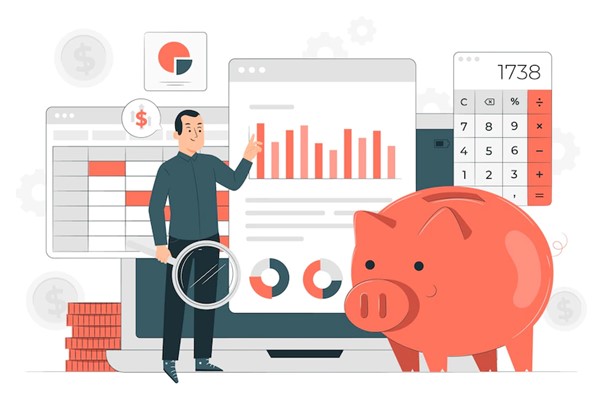Whether you are a new e-commerce business start-up or a conventionally operating brick-and-mortar fashion retailer, there is no denying that our era is digitally derived. In this age of post-pandemic technology, it is impossible to thrive globally with international competitors without an online website platform.
However, having a successful clothing line and a fruitful e-commerce platform requires more than just a passion for fashion and design. Furthermore, setting up a website for your e-commerce business requires more than just a technical whiz. If you want a lasting business performance, you must have an e-commerce clothing business plan.
So, to have a successful e-commerce fashion brand follow us on this step-by-step journey outlining your e-commerce fashion business model.
Who Should Implement This Online Fashion Retail Business Model?
The online fashion retail business model in this article is a detailed plan transcribed for any newly launched e-commerce business or any established fashion brand wishing to just launch an online store to complement its physical brick-and-mortar establishment.
Although, if you are an organization with already established conventional store and online platform representation you can still read through this article to update your brand’s online performance, using this clothing e-commerce website business plan.
E-Commerce Clothing Store Business Plan; A Step-By-Step Model For Fashion Lines
A business plan is a roadmap that details the foundational aspects of a company, including its products or services, funding sources, management team, employees, organizational structure, financial viability, strategy for generating revenue, Key Performance Indicators, and more. It is a well-thought-out plan outlining the specifics of your online clothing store and the goals you hope to achieve in the future.
If you are an already established conventional fashion store just setting up an online division we would still recommend having a new business plan specific to your online apparel store. So, let’s hit it off, with the components of the 10-step-by-step e-commerce fashion store business plan:
1. Business Outline
To start strong with your online fashion retail business model, you must start with what you know. This is the foundation of your business plan. It is the summary of the whole business plan on one page, so we recommend writing it at the end, though it should be placed first. It should include:
Executive Summary
Executive summaries are meant to pique the reader’s interest and provide a quick overview of the firm. It is the first impression of your brand that the executive summary could help you attract investors. It should include the issue being addressed, the intended clientele, products, services, and the most crucial accounting projections.
Idea
In two sentences include the product and the idea behind your fashion brand. Also, add the competitive advantage your fashion and e-commerce line hold to your competition.
The Brand and Team
Introduce your brand and the team that has made the magic happen.
Legalities and Registrations
Whether you are a conventional fashion outlet or an e-commerce clothing store you need to register your business legally. Consequently, outline the details to prove your legitimacy as an authorized enterprise.
Scope Of Business
Outline and set the scope of your business in a few lines. Answer the question: what do you do presently, tomorrow, and in the distant future?
2. Business Objective = Identity
Your business objective is your identity and so a critical part of your branding. Your objectives should reflect in your every endeavour concerning your employees, investors, and consumers. Thus, if you wish to be a successful online enterprise you must have a clear objective of what you wish your identity to be as an online fashion store. You must identify:
Mission
Your brand’s mission statement should describe the services or products you provide to your target consumers. A mission fulfilled reaches your vision.
Vision
The vision is the desired long-term outcome. Naturally, these objectives will lack motivation unless they are infused with some degree of ambition.
Values
Every company needs to have its values as its guiding principle. These core values are the ideals that represent your company. Your fashion brand should incorporate these values when managing your enterprise, online services, leadership, employees, consumers, and business decisions.
Although you should get creative with your mission, vision, and values and they should be in line with one another, do keep them simple and to the point. Remember your mission, vision, and values should later be presented to the public on your website. So, try to set objectives that you; can uphold, are ethical, and environmentally conscious.
3. SWOT Analysis
A SWOT Analysis is the Strength, Weaknesses, Opportunities, and Weaknesses (SWOT) strategic planning matrix for your developing fashion business. Creating a SWOT analysis can give you new perspectives and a fresh approach to your fashion business strategies both as an e-commerce clothing store or a conventional retailer.
4. Return on Investment
Once you have identified your SWOT Matrix you must identify your return on investment source by analyzing factors like:
- Competition – The competition you may have in your fashion line and how you can overcome them.
- Legalities – The legalities that apply to your e-commerce fashion business platform and the requirements you need to implement.
Then once you have identified those you must outline your solutions and advantages and how your e-commerce business strategy could generate a return on investment for your enterprise.
5. Technology Assessment
One of the most effective ways to gain dominance over online fashion retailers is through the technology you utilize within your website. So, analyze your e-commerce competition and then outline the technology which you wish to utilize in your online fashion retail business model.
For instance, since e-commerce fashion retailers are in abundance and consumers are looking for convenient online shopping experiences it would be wise to incorporate technologies like Robosize that provide size and style recommendations. This way you would gain the upper hand over your competition while boosting their business’s return on investment, sales, and profits.

6. Products and Services
You would need to identify the most detailed aspects of your products and services to identify your target audience by outlining them.
- Your Product and Service, and its value compared to the competition.
- The Product and Services prices
- Estimated Profits
- Financing expenses of procuring the products and services
- Risk Analysis for the specific products
- Technique for presenting the products to consumers
- Technologies required for apparel production, sales, and distribution
Finally, once you have outlined these criteria, you could identify your target audience and why users would ultimately choose to purchase your fashion and apparel product. Which would then provide your e-commerce clothing store business plan with a value estimation of your possible earnings.

7. Digital Marketing and Advertising Strategy
E-commerce platforms must have a digital marketing and advertising strategy to succeed. Unlike a traditional store, apparel consumers won’t find your website if they don’t know you. Thus, initiating your digital marketing and advertising strategy before launching your e-commerce fashion store website is wise.
However, before launching your digital marketing strategy you must create a plan outline. Although it is part of the e-commerce clothing store business plan it is one component that demands in-depth analysis. You must identify your e-commerce marketing and advertising strategy by considering approaches like:
- Social Media Marketing
- Search Engine Optimizations (SEOs)
- Video Marketing on YouTube
- Pay-Per-Click Ads
- Facebook Ads
- Instagram Ads
- Google Ads
- UGC / User-Generated Content Marketing
- Influencer Marketing.
- Email Marketing
- Content Marketing
Though the list above may seem overwhelming and scary for an online shop, the best aspect about e-commerce businesses, in general, is that all the approaches for a Marketing and Advertising Strategy are far cheaper and environmentally friendly than traditional strategies.
8. Operational Plan
The operational plan in your online fashion retail business model will detail the steps it will take and the goals you’ll have to strive for to reach your business objectives. It’s the backbone of how an e-commerce business will function daily. The typical time frame of an operational plan is 12 months.
The Operational plans will establish information like; daily routines, order of tasks, working hours, employee meet-up locations, physical office location, product procurement, inventory management, outsourcing companies and tasks assigned, employee tasks, managerial responsibilities, and anything that may be in-line with the operations of your e-commerce clothing store.
By planning and strategizing your operational plot you can identify your strong and weak points and touch up on them depending on the results. The components you must consider for an online fashion platform are;
Customer Service
The support and services you provide to your online customers are paramount to converting browsing customers to buying clientele. This is because online, unlike a conventional brick-and-mortar store you would not be available physically to attend to your customers or provide a good first impression.
So, this task must be fulfilled through the services, technologies, and widgets provided. Some customer service facilities you can offer on your e-commerce fashion and apparel platform, include.
- Chat Bots
- Contact Us Pages
- Virtual Fitting Room Technologies
- Size and Style Recommendation Tools, and
- Emails

Return Policies
Consider your e-commerce fashion line’s return policies. These could make or break your organization and the success it expects. So, consider the matter carefully. For example, if you are worried about hygiene issues or have garments that can’t be returned, we would suggest virtual fitting rooms for E-commerce. This way your consumers can shop with assurance without ever having to return an item due to sizing and styling issues.
Risks and Issues
Any conventional store or clothing e-commerce website business plan must include possible risks and issues in the business. Some risks you could include that are in line with e-commerce fashion platforms are:
- Product Damages and Faults upon arrival from supplier,
- Problems with garment supplies,
- Lack of fashion apparel in the inventory,
- Website lags due to website traffic,
- Complaints regarding website user interface,
- Problems with postage,
- Loss of products in delivery,
- Website Management Issues
You must list the risks and issues while also stating the solutions and possible people in charge.
Other Operational Factors
Additional operational factors that you must consider when strategizing your operational plan are:
- Negotiations
- Suppliers
- Investors
- Sponsors
- Procurement of Equipment and Supplies
- Website Design, Run, and Management
- Inventory Warehouse Location
- Inventory Management
- Delivery Carrier Service Provider
- And more
9. Financial Plan & Forecast Estimations
A financial plan and projection forecast will outline how finances will be handled based on estimated costs, forecasts, predictions, and strategic calculations. While the financial plan outlines necessary strategies for generating future incomes and covering expenses. The Financial forecast projects the future incomes, revenues, and expenses.
Both the financial plan and the forecast estimation are essential for an e-commerce fashion line that wishes to prosper. Hence, the more detailed the outline in the document the less chance for the online fashion store to face unexpected expenses that could bring disadvantages and loss. You should usually outline your financial plan for the first one or two years of the online business.

10. Funding and Sponsorships
It is rare for an online fashion retail business to require funding and sponsorship. Particularly if you are a new start-up and still do not plan to have a conventional outlet. However, if you do require funding and sponsorship you would have to include the details of your external financing in your e-commerce clothing business model too. In this section, you would have to establish:
- The Monetary Funding and Sponsorship amount required
- The financing detail of why the money is required
- What will the fund be used for?
- Current and future expenditures
Funding requests must be tailored to the funding source so do not take this section lightly if you wish to attract your sponsor’s approval.
A Successful Online Fashion Store
To have a prospering e-commerce clothing and apparel store you need to start your brand by writing an e-commerce website business plan. A business model will be the foundation that would build your organization. However, do remember that to have a successful online fashion business you should also apply:
- Innovative Technologies to entice Gen-Z consumers.
- User-friendly website interfaces to allow smooth and quick purchases on any device.
- Virtual dressing rooms to lower returns, boost sales, and reduce pollution using AR and AI sizing and styling suggestions.
- Sustainable Technologies to reduce carbon footprints and promote eco-friendly practices both among online apparel stores and fashion consumers alike.
Remember that we are in the era of technology and a successful online fashion website requires innovation and cutting-edge technologies along with the source of a well-planned e-commerce clothing store business plan.
Let’s discuss about your fashion E-commerce.
E-Commerce Clothing Store Business Plan Model
An online fashion retail business model or a business strategy plan for a conventional store is only the initial step to setting up a physical or an e-commerce clothing store. Launching any business physically or online requires a lot more planning, strategizing, design, functionality, and implementation.
It is just important to remember that even though a business plan is written to forecast a full year in the enterprise it should never be set in stone.
A business plan should always be the first point of reference when operating your e-commerce store. Still, it should also constantly be updated to include any unforeseen changes or strategic deviations. Henceforth use our 10-step online clothing and fashion store business plan model for a profitable and prosperous e-commerce fashion enterprise.
